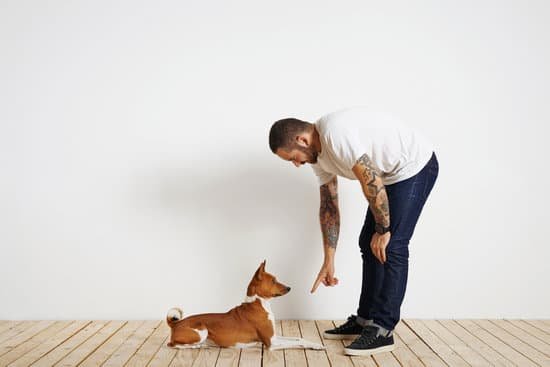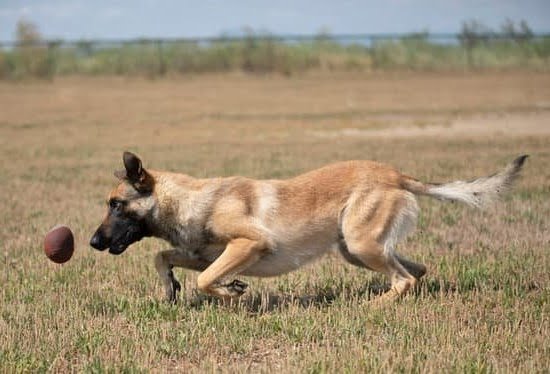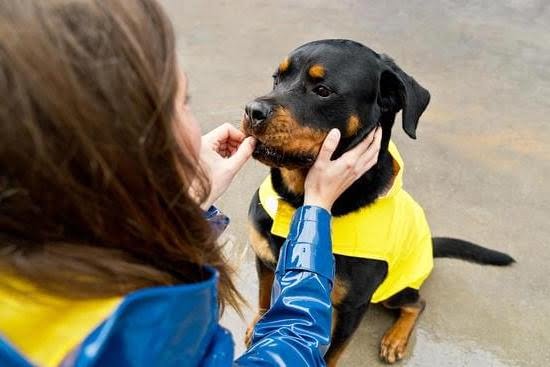Are you struggling with a lazy dog who just won’t fetch? In this article, we will explore how to train a lazy dog to fetch and transform them into an enthusiastic participant in this classic game.
Understanding the behavior of lazy dogs is essential, as well as determining why they may be hesitant to engage in fetching activities. By following some simple steps and tips, you can encourage your lazy dog to get up and active, enjoying the benefits of this fun and stimulating game.
Lazy dogs may exhibit reluctance to fetch for various reasons, including lack of interest, low energy levels, or simply not understanding the concept of fetching. It’s important to approach training with patience and understanding, taking into consideration your dog’s unique disposition and temperament. Assessing your dog’s readiness and willingness to learn fetch is the first step in successfully transforming their behavior.
Creating a positive and encouraging training environment is key to motivating a lazy dog to engage in fetch activities. By establishing a supportive atmosphere that promotes positive interaction and rewards good behavior, you can set the stage for successful training sessions. Additionally, selecting the right fetch toy or item can make all the difference in capturing your lazy dog’s interest and motivation. Stay tuned as we delve further into these topics throughout this article.
Assessing Your Dog’s Readiness and Willingness to Learn Fetch
Before starting the training process, it’s important to assess whether your dog is ready and willing to learn how to fetch. Some dogs may not be inclined to play fetch because of their breed, age, or health condition. It’s essential to consider these factors before beginning the training.
To evaluate your dog’s readiness, observe their behavior during playtime. Does your dog enjoy running after objects or toys? Are they naturally curious and eager to explore new things? These traits can indicate a willingness to engage in fetch training. Additionally, consider your dog’s age and any potential physical limitations that may affect their ability to fetch.
Another aspect to assess is your dog’s motivation for play. Some dogs may prefer other activities over fetching, such as tug-of-war or simply lounging around. Understanding what motivates your dog will help in tailoring the training process to make it more appealing and rewarding for them.
Moreover, it’s important to consult with a veterinarian before starting any physical activity with your dog, especially if they have existing health issues or are of an advanced age. The vet can provide valuable insights into whether fetch training is suitable for your pet and offer guidance on how to adapt the training based on their specific needs.
| Assessment Criteria | Evaluation |
|---|---|
| Enjoyment of Running | Enjoys running after objects/toys |
| Curiosity and Eagerness | Naturally curious and eager to explore new things |
| Motivation for Play | Preference for certain activities over fetching |
| Health Evaluation | Consultation with a veterinarian before starting any physical activity |
Creating a Positive and Encouraging Training Environment
Patience and Understanding
It’s essential to approach the training process with patience and understanding. Understand that your lazy dog may take longer to grasp the concept of fetching compared to more energetic dogs. Avoid showing frustration or impatience during the training sessions as this can create a negative environment and hinder progress.
Utilize Positive Reinforcement
Use plenty of positive reinforcement such as treats, praise, and petting when your lazy dog shows any interest or progress in fetching. This will motivate them to continue trying and associate fetch with positive experiences.
Consistent Training Schedule
Establish a consistent training schedule and location for fetch training. Dogs thrive on routine, so having dedicated time each day for training will help your dog understand what is expected of them. Consistency is key in creating a positive environment for learning.
By creating a positive and encouraging training environment, you can effectively motivate your lazy dog to engage in the fetch activity. With patience, consistency, and positivity, your dog will gradually learn to enjoy fetching and strengthen the bond between you through this shared activity.
Selecting the Right Fetch Toy or Item to Motivate Your Lazy Dog
Continuing with the process of training a lazy dog to fetch, it is essential to select the right fetch toy or item that will motivate your furry friend. Every dog has different preferences when it comes to toys, so it’s important to observe what type of items your dog shows interest in.
Some dogs may be motivated by a tennis ball, while others may prefer a soft frisbee or a plush toy. Understanding your dog’s preferences will make the training process much more effective.
In addition to considering your dog’s preferences, it’s also important to choose a fetch toy or item that is easy for your dog to pick up and carry. For example, if you have a small breed or a senior dog, you’ll want to select a lightweight and easy-to-grab toy.
On the other hand, if you have a larger breed with plenty of energy, you can opt for a more durable and sturdy fetch item that can withstand vigorous play.
Furthermore, it’s beneficial to incorporate interactive and engaging toys into the training process. Look for fetch toys that have additional features such as squeakers or treats hidden inside.
These added elements can pique your lazy dog’s interest and make the game of fetch even more enjoyable. By selecting the right fetch toy or item that aligns with your dog’s preferences and abilities, you can effectively motivate them to participate in this fun activity and overcome their laziness when it comes to fetching.
Step by Step Training Process for Teaching Your Lazy Dog to Fetch
Training a lazy dog to fetch can be a rewarding experience, but it requires patience, consistency, and the right approach. Here are some steps to help you teach your lazy dog to fetch:
1. Start with basic obedience training: Before diving into fetch-specific training, ensure that your dog has a good grasp of basic commands such as “sit,” “stay,” and “come.” This will establish a foundation of communication and discipline that will make the fetch training process smoother.
2. Introduce the fetch toy: Selecting the right fetch toy is crucial in motivating your lazy dog to engage in this activity. Choose a toy or item that your dog shows interest in, whether it’s a tennis ball, frisbee, or rope toy. Introduce the toy by allowing your dog to inspect it and get comfortable with it.
3. Use positive reinforcement: When teaching your lazy dog to fetch, use positive reinforcement techniques such as treats, praise, and affection to encourage even small steps in the right direction. Each time your dog shows interest in the fetch toy or attempts to retrieve it, reward them with verbal praise and a treat.
4. Gradual training process: Take baby steps when teaching your lazy dog to fetch. Start by simply getting them accustomed to picking up the toy, then progress to short distances of throwing it for them to retrieve. Gradually increase the distance as they become more confident with fetching.
5. Patience and consistency: Training a lazy dog to fetch may take time, so be patient and consistent throughout the process. Practice regularly for short intervals rather than long sessions, and remain calm and encouraging even if progress seems slow.
By following these steps and staying dedicated to training your lazy dog to fetch, you can help them overcome their reluctance and enjoy this fun activity together.
Common Challenges and How to Overcome Them During Training
Lack of Interest
One common challenge when training a lazy dog to fetch is their lack of interest in the activity. This may be due to their nature or previous experiences. To overcome this, it’s important to make the fetch game fun and exciting for your dog. Use treats, praise, and enthusiasm to motivate them. Start by playing with the toy yourself and showing excitement when your dog shows any interest. This positive reinforcement can help spark their interest in fetching.
Distractions
Another challenge during training may be distractions in the environment that can deter your dog from focusing on the task at hand. If your dog gets distracted easily, consider finding a quiet and enclosed space for training sessions. Minimize noise and other distractions to help your dog stay focused on learning to fetch. Additionally, using high-value treats as a reward can help keep your dog’s attention on you and the fetching activity.
Reluctance to Release the Toy
Some dogs, especially lazy ones, may be reluctant to release the toy once they’ve retrieved it, as they want to hold onto it out of possessiveness or anticipation of another round of play. To address this challenge, teach your dog a “drop it” or “release” command during training.
Offer a treat as a reward when they let go of the toy on command, gradually reinforcing this behavior until they understand that releasing the toy leads to a positive outcome like treats or continued playtime. Be patient and consistent in practicing this command during fetch training sessions.
Reinforcing the Fetch Behavior and Maintaining Consistency
Once your lazy dog has started to show some progress in fetching, it is important to reinforce this behavior and maintain consistency in your training approach. Reinforcement can come in various forms, such as verbal praise, treats, or a favorite toy. When your dog successfully fetches an item, make sure to immediately provide positive reinforcement to reinforce the behavior. This will associate fetching with a positive experience for your dog, making them more likely to continue the behavior.
Consistency is key when it comes to training a lazy dog to fetch. Make sure that everyone in the household is on board with the training method and uses the same commands and rewards. Inconsistency can confuse your dog and set back the progress that has been made. Set aside specific times each day for training sessions, keeping them short but regular.
It’s also important to gradually increase the difficulty of the fetch task as your dog becomes more proficient at it. You can start by increasing the distance from which you throw the item for them to fetch or introducing distractions while they are fetching. Keep in mind that every dog is different, so be patient and adjust your training methods based on your dog’s individual progress and needs.
| Reinforcement Method | Consistency Tips |
|---|---|
| Verbal praise | Ensure all family members use the same commands and rewards |
| Treats or favorite toy | Schedule regular, short training sessions every day |
| Increasing difficulty gradually | Be patient and adjust methods based on individual progress |
Celebrating Success and Enjoying the Newfound Activity With Your Once Lazy Dog
In conclusion, training a lazy dog to fetch can be a rewarding and fulfilling experience for both you and your furry companion. By understanding the behavior of lazy dogs and creating a positive training environment, you can assess your dog’s readiness and willingness to learn fetch. Additionally, selecting the right fetch toy or item to motivate your lazy dog is essential in the training process.
As you go through the step-by-step training process for teaching your lazy dog to fetch, it’s important to anticipate common challenges and know how to overcome them during training. Patience, consistency, and positive reinforcement are key in reinforcing the fetch behavior and maintaining progress.
Finally, once your once lazy dog successfully learns to fetch, it’s time to celebrate the success. Enjoying this newfound activity with your furry friend can strengthen the bond between you two.
It’s an opportunity to spend quality time together and engage in a fun and rewarding activity that will benefit both your dog’s physical and mental well-being. So, start practicing these training tips today, and soon enough, you’ll have a happy and active dog ready to play fetch with you anytime.
Frequently Asked Questions
How Do You Teach a Lazy Dog to Fetch?
Teaching a lazy dog to fetch may require some patience and motivation. Start by using treats or their favorite toy to encourage them to chase after it and bring it back to you. Use positive reinforcement and praise when they make an effort, even if they don’t fully fetch at first.
Gradually increase the distance and work on getting them to bring the item back to you. Consistency and patience will be key in teaching a lazy dog to fetch.
How Do I Teach My Dog to Fetch and Bring Back?
To teach your dog to fetch and bring back, start with some basic training using a toy or ball that they enjoy playing with. Encourage them to chase after it, then use a command such as “bring it” or “fetch” when they pick it up.
When they return with the item, offer plenty of praise and maybe even a treat as a reward. With consistent practice and positive reinforcement, your dog should eventually learn to fetch and bring back on command.
Is It Too Late to Teach My Dog Fetch?
It’s never too late to teach a dog new tricks, including fetching. While younger dogs may pick up new commands more quickly, older dogs can still learn with patience and consistency in training.
Start by using their favorite toys or treats as motivation, and slowly introduce them to the concept of fetching by encouraging them to chase after an item you’ve thrown and bringing it back to you. With time and practice, even older dogs can learn how to fetch.

Welcome to the blog! I am a professional dog trainer and have been working with dogs for many years. In this blog, I will be discussing various topics related to dog training, including tips, tricks, and advice. I hope you find this information helpful and informative. Thanks for reading!





